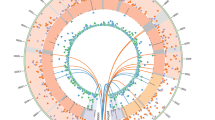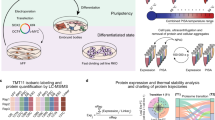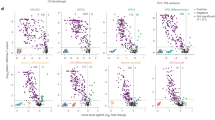Abstract
Induced pluripotent stem (iPS) cells hold the potential to revolutionize regenerative medicine through their capacity to generate cells of diverse lineages for future patient-specific cell-based therapies. To facilitate the transition of iPS cells to clinical practice, a variety of technologies have been developed for transgene-free pluripotency reprogramming. We recently reported efficient iPS cell generation from human fibroblasts using synthetic modified mRNAs. Here we describe a stepwise protocol for the generation of modified mRNA–derived iPS cells from primary human fibroblasts, focusing on the critical parameters including medium choice, quality control, and optimization steps needed for synthesizing modified mRNAs encoding reprogramming factors and introducing these into cells over the course of 2–3 weeks to ensure successful reprogramming. The protocol described herein is for reprogramming of human fibroblasts to pluripotency; however, the properties of modified mRNA make it a powerful platform for protein expression, which has broad applicability in directed differentiation, cell fate specification and therapeutic applications.
This is a preview of subscription content, access via your institution
Access options
Subscribe to this journal
Receive 12 print issues and online access
$259.00 per year
only $21.58 per issue
Buy this article
- Purchase on SpringerLink
- Instant access to full article PDF
Prices may be subject to local taxes which are calculated during checkout




Similar content being viewed by others
Change history
20 March 2013
In the version of this article initially published, acknowledgment of the technical assistance of Andrew Ettenger was omitted. The error has been corrected in the HTML and PDF versions of the article.
References
Takahashi, K. & Yamanaka, S. Induction of pluripotent stem cells from mouse embryonic and adult fibroblast cultures by defined factors. Cell 126, 663–676 (2006).
Takahashi, K. et al. Induction of pluripotent stem cells from adult human fibroblasts by defined factors. Cell 131, 861–872 (2007).
Park, I.H. et al. Disease-specific induced pluripotent stem cells. Cell 134, 877–886 (2008).
Grskovic, M., Javaherian, A., Strulovici, B. & Daley, G.Q. Induced pluripotent stem cells–opportunities for disease modelling and drug discovery. Nat. Rev. Drug Discov. 10, 915–929 (2011).
Robinton, D.A. & Daley, G.Q. The promise of induced pluripotent stem cells in research and therapy. Nature 481, 295–305 (2012).
Stadtfeld, M., Nagaya, M., Utikal, J., Weir, G. & Hochedlinger, K. Induced pluripotent stem cells generated without viral integration. Science 322, 945–949 (2008).
Yu, J. et al. Human induced pluripotent stem cells free of vector and transgene sequences. Science 324, 797–801 (2009).
Gonzalez, F. et al. Generation of mouse-induced pluripotent stem cells by transient expression of a single nonviral polycistronic vector. Proc. Natl. Acad. Sci. USA 106, 8918–8922 (2009).
Hu, K. et al. Efficient generation of transgene-free induced pluripotent stem cells from normal and neoplastic bone marrow and cord blood mononuclear cells. Blood 117, e109–e119 (2011).
Jia, F. et al. A nonviral minicircle vector for deriving human iPS cells. Nat. Methods 7, 197–199 (2010).
Narsinh, K.H. et al. Generation of adult human induced pluripotent stem cells using nonviral minicircle DNA vectors. Nat. Protoc. 6, 78–88 (2011).
Okita, K. et al. A more efficient method to generate integration-free human iPS cells. Nat. Methods 8, 409–412 (2011).
Okita, K., Nakagawa, M., Hyenjong, H., Ichisaka, T. & Yamanaka, S. Generation of mouse induced pluripotent stem cells without viral vectors. Science 322, 949–953 (2008).
Si-Tayeb, K. et al. Generation of human induced pluripotent stem cells by simple transient transfection of plasmid DNA encoding reprogramming factors. BMC Dev. Biol. 10, 81 (2010).
Woltjen, K. et al. piggyBac transposition reprograms fibroblasts to induced pluripotent stem cells. Nature 458, 766–770 (2009).
Yu, J., Chau, K.F., Vodyanik, M.A., Jiang, J. & Jiang, Y. Efficient feeder-free episomal reprogramming with small molecules. PLoS ONE 6, e17557 (2011).
Yusa, K., Rad, R., Takeda, J. & Bradley, A. Generation of transgene-free induced pluripotent mouse stem cells by the piggyBac transposon. Nat. Methods 6, 363–369 (2009).
Kim, D. et al. Generation of human induced pluripotent stem cells by direct delivery of reprogramming proteins. Cell Stem Cell 4, 472–476 (2009).
Zhou, H. et al. Generation of induced pluripotent stem cells using recombinant proteins. Cell Stem Cell 4, 381–384 (2009).
Fusaki, N., Ban, H., Nishiyama, A., Saeki, K. & Hasegawa, M. Efficient induction of transgene-free human pluripotent stem cells using a vector based on Sendai virus, an RNA virus that does not integrate into the host genome. Proc. Jpn Acad. Ser. B Phys. Biol. Sci. 85, 348–362 (2009).
Ban, H. et al. Efficient generation of transgene-free human induced pluripotent stem cells (iPSCs) by temperature-sensitive Sendai virus vectors. Proc. Natl. Acad. Sci. USA 108, 14234–14239 (2011).
Warren, L. et al. Highly efficient reprogramming to pluripotency and directed differentiation of human cells with synthetic modified mRNA. Cell Stem Cell 7, 618–630 (2010).
Diebold, S.S., Kaisho, T., Hemmi, H., Akira, S. & Reis e Sousa, C. Innate antiviral responses by means of TLR7-mediated recognition of single-stranded RNA. Science 303, 1529–1531 (2004).
Hornung, V. et al. 5′-Triphosphate RNA is the ligand for RIG-I. Science 314, 994–997 (2006).
Pichlmair, A. et al. RIG-I-mediated antiviral responses to single-stranded RNA bearing 5′-phosphates. Science 314, 997–1001 (2006).
Kariko, K., Buckstein, M., Ni, H. & Weissman, D. Suppression of RNA recognition by Toll-like receptors: the impact of nucleoside modification and the evolutionary origin of RNA. Immunity 23, 165–175 (2005).
Angel, M. & Yanik, M.F. Innate immune suppression enables frequent transfection with RNA encoding reprogramming proteins. PLoS ONE 5, e11756 (2010).
Kariko, K. & Weissman, D. Naturally occurring nucleoside modifications suppress the immunostimulatory activity of RNA: implication for therapeutic RNA development. Curr. Opin Drug Discov. Devel. 10, 523–532 (2007).
Kariko, K. et al. Incorporation of pseudouridine into mRNA yields superior nonimmunogenic vector with increased translational capacity and biological stability. Mol. Ther. 16, 1833–1840 (2008).
Anderson, B.R. et al. Incorporation of pseudouridine into mRNA enhances translation by diminishing PKR activation. Nucleic Acids Res. 38, 5884–5892 (2010).
Liptakova, H., Kontsekova, E., Alcami, A., Smith, G.L. & Kontsek, P. Analysis of an interaction between the soluble vaccinia virus-coded type I interferon (IFN)-receptor and human IFN-α1 and IFN-α2. Virology 232, 86–90 (1997).
Kormann, M.S. et al. Expression of therapeutic proteins after delivery of chemically modified mRNA in mice. Nat. Biotechnol. 29, 154–157 (2011).
Kariko, K., Muramatsu, H., Keller, J.M. & Weissman, D. Increased erythropoiesis in mice injected with submicrogram quantities of pseudouridine-containing mRNA encoding erythropoietin. Mol. Ther. 20, 948–953 (2012).
Warren, L., Ni, Y., Wang, J. & Guo, X. Feeder-free derivation of human induced pluripotent stem cells with messenger RNA. Scientific Reports 2, 657 doi:10.1038/srep00657 (2012).
McElroy, S.L. & Reijo Pera, R.A. Culturing human embryonic stem cells in feeder-free conditions. Cold Spring Harb. Protoc. 2008, doi:10.1101/pdb.prot5044 (2008).
Acknowledgements
We thank T. Schlaeger, L. Daheron, W. Ebina and L. Zhangi for their valuable suggestions and discussion, and L. Warren and P. Manos for past contributions. We thank A. Ettenger for technical assistance. This work was funded in part by a grant from the Harvard Stem Cell Institute. D.J.R. is a New York Stem Cell Foundation Robertson Investigator.
Author information
Authors and Affiliations
Contributions
P.K.M. and D.J.R. designed the experiments. P.K.M. performed the experiments. P.K.M. and D.J.R. analyzed the data and wrote the manuscript.
Corresponding author
Ethics declarations
Competing interests
D.J.R. is a cofounder of ModeRNA Therapeutics, a Cambridge, Massachusetts–based biotechnology company that is exploring the therapeutic potential of modified mRNA.
Supplementary information
Supplementary Data
Annotated sequence files of reprogramming factors (KLF4, c-MYC, OCT4, SOX2 and LIN28A) and NDG (PDF 710 kb)
Rights and permissions
About this article
Cite this article
Mandal, P., Rossi, D. Reprogramming human fibroblasts to pluripotency using modified mRNA. Nat Protoc 8, 568–582 (2013). https://doi.org/10.1038/nprot.2013.019
Published:
Issue date:
DOI: https://doi.org/10.1038/nprot.2013.019
This article is cited by
-
A TRIM21-based bioPROTAC highlights the therapeutic benefit of HuR degradation
Nature Communications (2023)
-
Rapid differentiation of hiPSCs into functional oligodendrocytes using an OLIG2 synthetic modified messenger RNA
Communications Biology (2022)
-
Loss of the fragile X syndrome protein FMRP results in misregulation of nonsense-mediated mRNA decay
Nature Cell Biology (2021)
-
TSC patient-derived isogenic neural progenitor cells reveal altered early neurodevelopmental phenotypes and rapamycin-induced MNK-eIF4E signaling
Molecular Autism (2020)
-
Human adipose-derived stem cells enriched with VEGF-modified mRNA promote angiogenesis and long-term graft survival in a fat graft transplantation model
Stem Cell Research & Therapy (2020)



